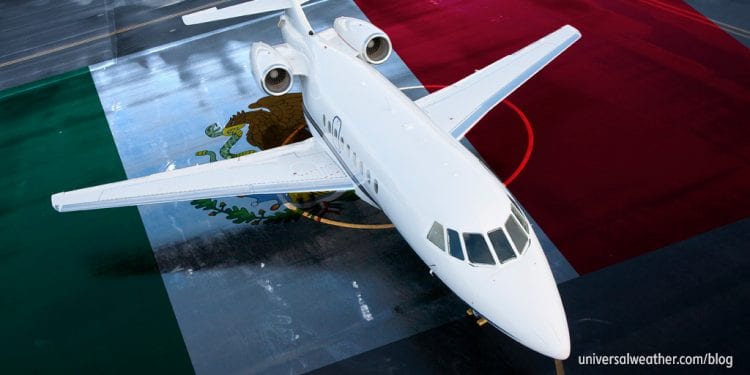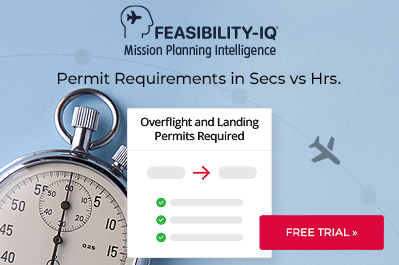Ops Update: New Random Ramp Checks in Mexico – What you need to know

On Nov. 19, 2019, it was announced that Civil Aviation Federal Agency (AFAC), the new agency replacing Civil Aviation Authority in Mexico (DGAC), would begin performing random ramp checks on all Part 91 and 135 operations at every airport in Mexico.
There has been some confusion in the industry regarding the purpose of these checks, what’s required, and what operators can expect. Our team at Universal Aviation Mexico is in close communication with local authorities to stay on top of this situation and provide accurate insights covering what you need to know.
1. Why is AFAC implementing ramp checks
AFAC is seeking to increase efficiency and enhance operational compliance for private operations in Mexico. Mexico has long had an issue with cabotage and illegal charter flights performed by N-Registered Part 91 operators, so AFAC has been working with the Federal Aviation Administration to develop procedures to crack down on these illegal charter flights.
Although all foreign aircraft, both Part 91 and 135, may be selected for ramp checks, the main objective is to crack down on illegal charter operations primarily being performed by N-registered Part 91 aircraft.
2. When and where are ramp checks in Mexico being implemented
Ramp checks began Nov. 19, 2019 and can occur randomly at any airport in Mexico.
3. What documents should I have available to expedite the ramp check
There has been some misinformation about the documentation requirements for a ramp check. Essentially, all the documentation being requested in these ramp checks are already required for operating into Mexico as published here.
These documents should be onboard your aircraft regardless of whether your flight is randomly selected for a ramp check. Below is the complete list of required documents (current as of time of this article’s publication).
PRIVATE NON-COMMERCIAL FLIGHTS
- Valid registration certificate, according to the FAA page
- Airworthiness Certificate
- Mexican insurance policy for private use, in the name that appears on the current registration certificate.
- Worldwide insurance policy, in the name that appears on the current certificate of registration
- Letter of authorization, in the name of and signed by the owner of the aircraft. In case the aircraft is in the name of a bank or financier, the name of the operator may appear. It is not necessary for the letter to be apostilled or notarized.
- Private operation letter, in the name of the owner of the aircraft, with a list of passengers, indicating the relationship with the aircraft or owner.
- Current medical certificates of the crew.
- Pilot licenses, with the correct type rating.
- Original Multiple Entry Permit and payment receipt if holding a MEP.
- Flight and Maintenance Logbooks
- Flight manuals and charts
- Noise Level Certificate
- Preflight Checklist
- Weight and Balance report
NON-SCHEDULED COMMERCIAL, AIR AMBULANCE OR CARGO
- Valid registration certificate, according to the FAA page.
- Airworthiness Certificate
- Air Operator or Air Carrier Certificate
- Form 4507, or section D085 of the operating specifications.
- Mexican insurance policy, in the name of the air operator, which appears on the AOC or ACC .
- World insurance policy, in the name of the air operator, which appears on the AOC or ACC
- Letter of authorization, in the name of and signed by the air operator, which appears in the ACC. It is not necessary to be apostilled or notarized.
- Current medical certificates of the crew.
- Pilot licenses, with the aircraft type rating.
- If operating under an indefinite Blanket Permit please have a copy of the latest permit, valid Mexico AOC, and the current year’s Verification.
- Flight and Maintenance Logbooks
- Flight manuals and charts
- Mexican AIP (for blanket permit holders only)
- Noise Level Certificate
- Preflight Checklist
- Weight and Balance report
PASSENGER CHARTER OR CARGO AIRCRAFT WITH 19 OR MORE PASSENGER SEATS
- Same documents as a Part 135 Operation
- Letter of authorization, in the name of and signed by the air operator, which appears on the AOR or ACC. AFAC requests it apostilled or notarized.
- Charter contract, with the data of the aircraft to be operated, operation itinerary, and signed by both parties, contractor and charterer.
4. How long do ramp checks take?
If you have all of the above documentation ready and available, the process should take about 30 minutes.
Conclusion
As part of a crackdown on illegal charter flights in Mexico from N-Registerd Part 91 operators, AFAC has implemented random ramp checks of all foreign flights. The ramp checks are taking place ramdomly at every airport in Mexico. The complete list of documentation required for the ramp check has been published by AFAC and if operators have all documents available, the entire process should last around 30 minutes.




